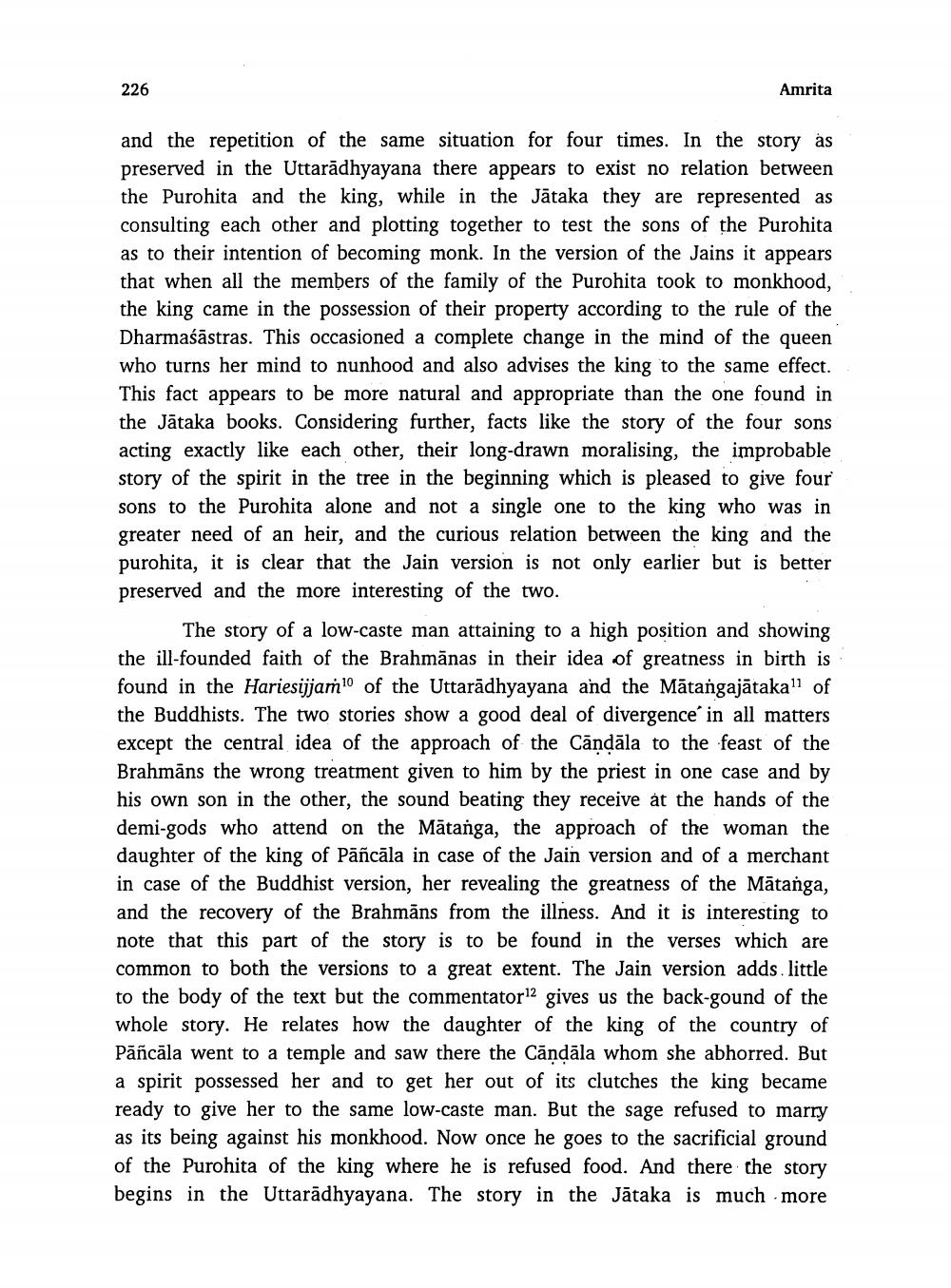________________
226
Amrita
and the repetition of the same situation for four times. In the story as preserved in the Uttarādhyayana there appears to exist no relation between the Purohita and the king, while in the Jātaka they are represented as consulting each other and plotting together to test the sons of the Purohita as to their intention of becoming monk. In the version of the Jains it appears that when all the members of the family of the Purohita took to monkhood, the king came in the possession of their property according to the rule of the Dharmaśāstras. This occasioned a complete change in the mind of the queen who turns her mind to nunhood and also advises the king to the same effect. This fact appears to be more natural and appropriate than the one found in the Jātaka books. Considering further, facts like the story of the four sons acting exactly like each other, their long-drawn moralising, the improbable story of the spirit in the tree in the beginning which is pleased to give four sons to the Purohita alone and not a single one to the king who was in greater need of an heir, and the curious relation between the king and the purohita, it is clear that the Jain version is not only earlier but is better preserved and the more interesting of the two.
The story of a low-caste man attaining to a high position and showing the ill-founded faith of the Brahmānas in their idea of greatness in birth is found in the Hariesijjaħ10 of the Uttarādhyayana and the Mātangajātaka'l of the Buddhists. The two stories show a good deal of divergence in all matters except the central idea of the approach of the Cāndāla to the feast of the Brahmāns the wrong treatment given to him by the priest in one case and by his own son in the other, the sound beating they receive at the hands of the demi-gods who attend on the Mātanga, the approach of the woman the daughter of the king of Pāñcāla in case of the Jain version and of a merchant in case of the Buddhist version, her revealing the greatness of the Mātanga, and the recovery of the Brahmāns from the illness. And it is interesting to note that this part of the story is to be found in the verses which are common to both the versions to a great extent. The Jain version adds. little to the body of the text but the commentator12 gives us the back-gound of the whole story. He relates how the daughter of the king of the country of Pāñcāla went to a temple and saw there the Cāndāla whom she abhorred. But a spirit possessed her and to get her out of its clutches the king became ready to give her to the same low-caste man. But the sage refused to marry as its being against his monkhood. Now once he goes to the sacrificial ground of the Purohita of the king where he is refused food. And there the story begins in the Uttarādhyayana. The story in the Jātaka is much more




